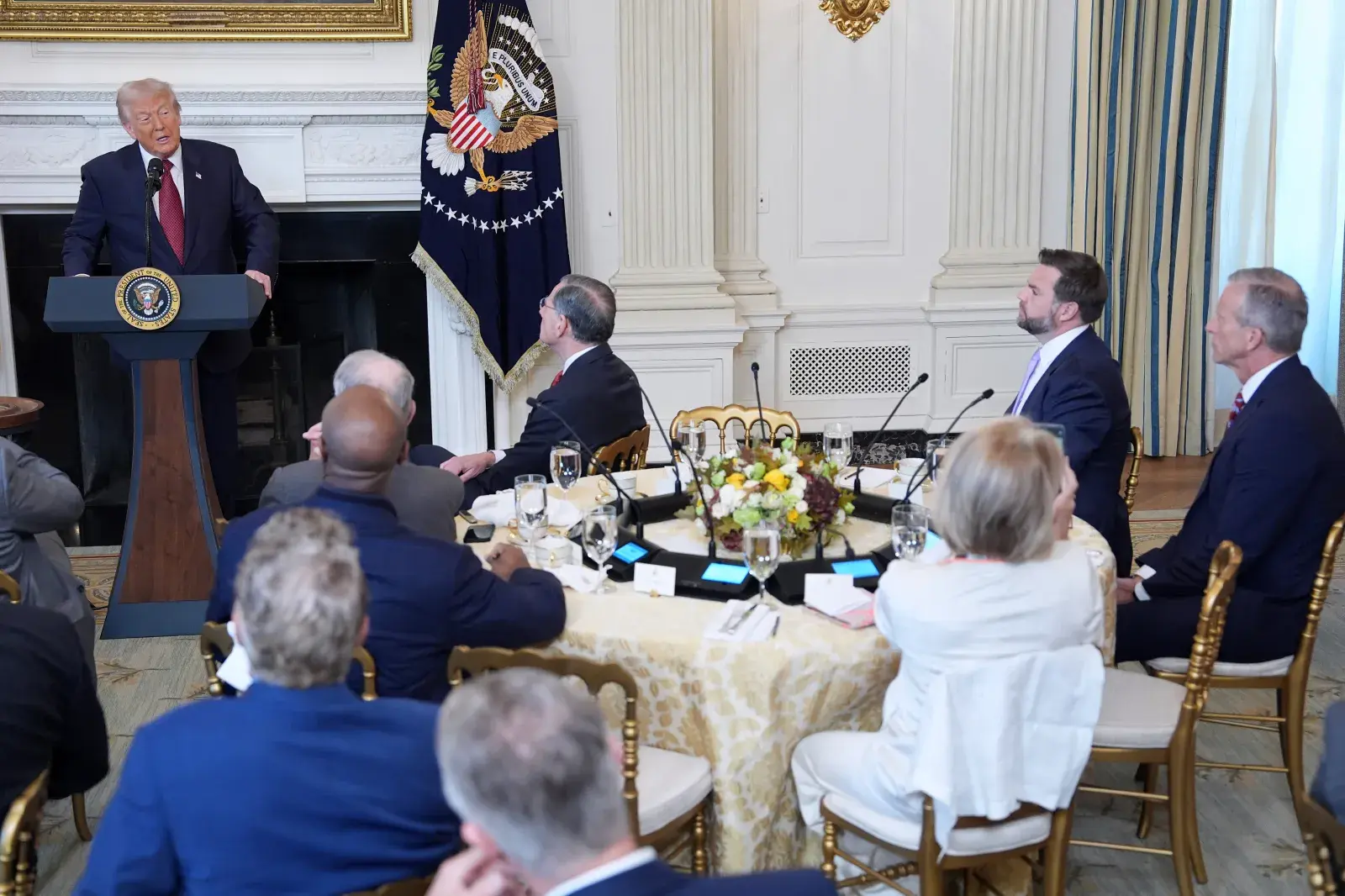Copyright newsweek

The U.S. federal government shutdown has officially made history. The shutdown, which began just after midnight on October 1, surpassed the previous record for the longest in the nation’s history on Wednesday. Why It Matters The shutdown has resulted in the interruption of SNAP benefits for millions of Americans and hundreds of thousands of federal employees furloughed or working without pay. The shutdown began after Democrats and Republicans failed to reach an agreement on legislation to fund the government. Democrats are seeking an extension of health care tax credits that are set to expire and the restoration of cuts made to Medicaid in a previous spending bill, but Republicans have not agreed to the proposal. President Donald Trump speaks during a breakfast with Senate and House Republicans in the State Dining Room of the White House, Wednesday, Nov. 5, 2025, in Washington. Senate Majority Leader John Thune, R-S.D. and Vice President JD Vance, seated right. (AP Photo/Evan Vucci) Longest Government Shutdowns in U.S. History On Tuesday, the Senate voted for the 14th time on a House-passed continuing resolution to fund the government, but the measure again failed to achieve the required 60 votes. The vote was 54 to 44. Democratic Senators Catherine Cortez Masto of Nevada and John Fetterman of Pennsylvania voted for the bill, along with independent Angus King of Maine, who caucuses with Democrats. Republican Senator Rand Paul of Kentucky voted against it. On Saturday, up to 42 million Americans did not receive new EBT cards via the SNAP program, as they normally would on the first of the month. Two federal judges ruled that the Trump administration must continue to pay for SNAP. The Trump administration said it will partially fund SNAP, but it is unclear when the beneficiaries will see the value loaded onto their cards. The process can take up to two weeks in some states. Trump said on social media on Tuesday that SNAP benefits “will be given only when the Radical Left Democrats open up government, which they can easily do, and not before!” Press secretary Karoline Leavitt said later that the administration continues to pay out SNAP funding in line with court orders. Bipartisan groups of senators continue talks in hopes of reaching a deal. “The pace of talks have increased,” Senator Gary Peters, who has been involved in conversations, said. President Donald Trump has called for the termination of the filibuster, arguing that ending the 60-vote threshold would allow the passage of bills without “Crazed Democrat Lunatics being able to block everything by withholding their votes.” “If we do terminate the Filibuster, we will get EVERYTHING approved, like no Congress in History,” Trump wrote on Truth Social. Republican senators have rejected the idea. Recent Reuters/Ipsos polling indicates that both parties are facing criticism from the public. The poll found that 50 percent of Americans place most of the blame on Republicans, while 43 percent blame Democrats. How Long Have Past Shutdowns Lasted? The second-longest government shutdown lasted 35 days, from December 22, 2018, to January 25, 2019. It was during President Donald Trump’s first term. The federal government shut down for 21 days in 1995 under then-President Bill Clinton. Another shutdown during Clinton’s presidency lasted 5 days. A 2013 shutdown under then-President Barack Obama lasted 16 days. What People Are Saying Senate Majority Leader John Thune, in Congress on Tuesday: “Enough is enough.” Senate Minority Leader Chuck Schumer: “We’re not asking for anything radical. Lowering people’s healthcare costs is the definition of common sense.” What Happens Next The shutdown continues as lawmakers attempt to reach a solution to open the government. This article includes reporting by the Associated Press. Do you have a story that Newsweek should be covering? Do you have any questions about this story? Contact LiveNews@newsweek.com.



